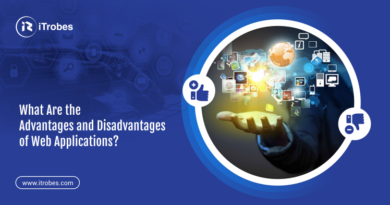New Trends of Education
Education is going digital. The current trend in educational technology is to create virtual classrooms, and student portals to have access to their learning materials and teachers wherever they are. This means that education isn’t confined within the walls of a campus anymore; there’s a much broader range of opportunities available now.
Campus management system
A campus management system is software that manages the daily activities of a college or university. It is used to manage student records, faculty attendance, and other administrative tasks such as managing facilities and equipment. This can be done through modules that are designed to meet specific needs within the institution.
A campus management system will allow an institution to:
Make use of its data in real time with dashboards and reports through student portal. Reduce manual processes by automating them through workflow automation tools (such as automated approvals).
Create strong communication channels between departments by linking emails with tasks in one place so everyone knows what’s going on at every stage of the process.
Virtual classroom
A virtual classroom is a virtual learning environment that allows students and instructors to interact with one another. It can be used for online courses, MOOCs (massive open online courses), face-to-face courses, and on-campus courses.
Virtual classrooms typically include a combination of real-time video conferencing software, screen sharing capabilities and whiteboards or other collaborative tools.
Students are able to interact with each other as well as the instructor using these tools like student portals while they watch recorded lectures together. Students can also create private chat rooms where they can collaborate on assignments or ask questions about course content.
Digital certificates
Digital certificates are a new way of certifying student achievement. Digital certificates can be issued by universities or outside organizations, but they’re likely to become more common if the government begins issuing them for non-academic achievements such as getting a driver’s license or completing military training.
For example: suppose you decide to apply for an IT job at your school’s computer lab where you work part-time. The company wants proof that you have sufficient knowledge about computers before hiring you full-time; therefore, it requires digital certification from your university’s computer science department before offering any job opportunities. If this sounds familiar (or if it describes something similar), then congratulations: Your university already has been issuing digital certificates!
Digital certificates are set to revolutionize education by giving students access to new types of learning experiences without having any impact on existing forms of assessment (such as traditional exams).
Micro learning
Micro learning is a short and focused learning experience, usually delivered through an online platform.
Personalized learning
Personalized learning is the process of delivering education to each student in a way that best meets their needs.
This means that you can learn at your own pace, work on what you want to work on, and get personalized attention from teachers and other students who are also interested in learning about the same things as you.
It’s like having an entire library of books at your fingertips—and someone else writing out the answers for you so that it’s easier for everyone involved!
Education is going digital.
In this new age of learning, students are able to access information, collaborate with their peers and teachers and learn in ways that were not previously possible. The benefits of digital education include:
Accessibility – Digital content is accessible anywhere, anytime.
This creates opportunities for students who may not be able to afford traveling to another location for an education.
Additionally, many people across the globe do not have access to electricity or other resources needed for physical learning materials such as books or computers; however, with online material these limitations would no longer exist!
Cost Effectiveness – Programs like Coursera offer free courses from top universities around the world which means there’s no need for expensive textbooks anymore.
You could also potentially learn faster because there’s less pressure on yourself since nobody knows what grade you got (unless they’re taking it too). You might even find yourself enjoying learning more than before because there’s nothing stopping you from spending as much time as necessary researching topics that interest you most.
Advent of new technologies
Education has always been a subject of debate and discussion, but with the advent of new technologies and innovations in the field, there is a need to reconsider our current methodologies.
Limitations
The methods we have used so far have their own limitations, and with time they are becoming obsolete. This has led to the introduction of new trends in education that aim at making learning more effective while also catering to individual needs.
The student portal is an important trend in education that will continue to grow. It provides a way for students to connect with their school and each other, as well as get access to the resources they need. This trend is likely to continue in the future, so it’s important for schools to invest in this technology and make sure their students are familiar with it.



